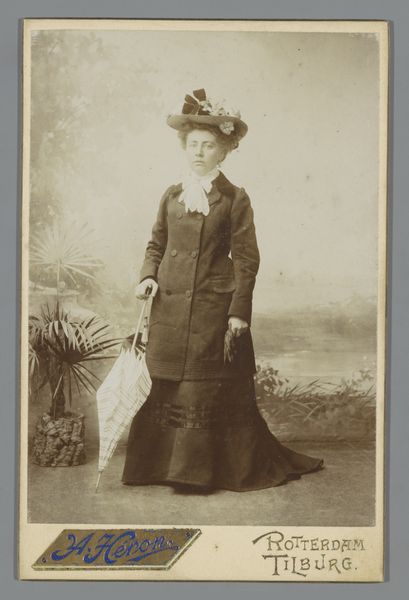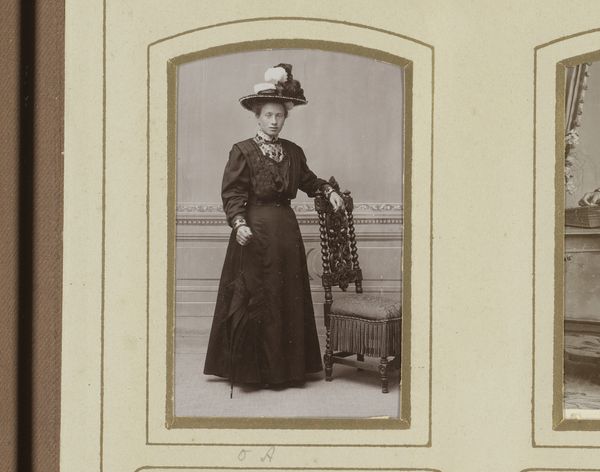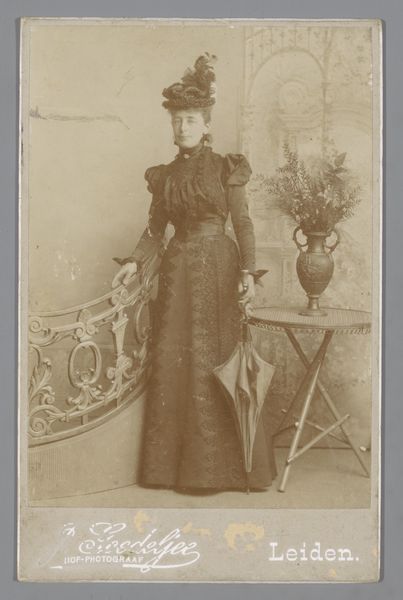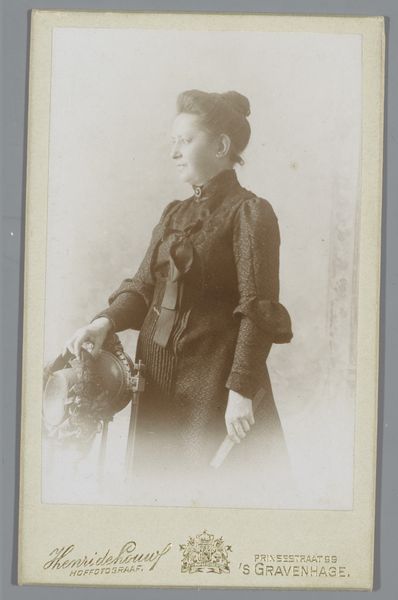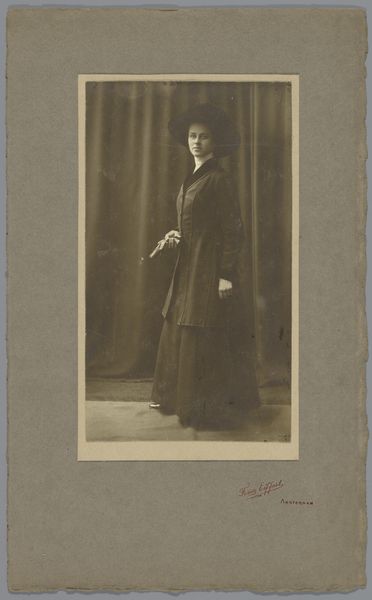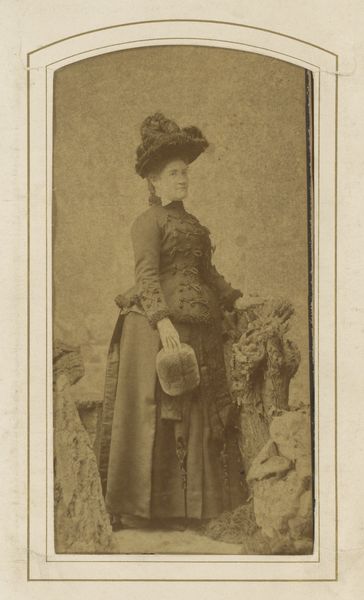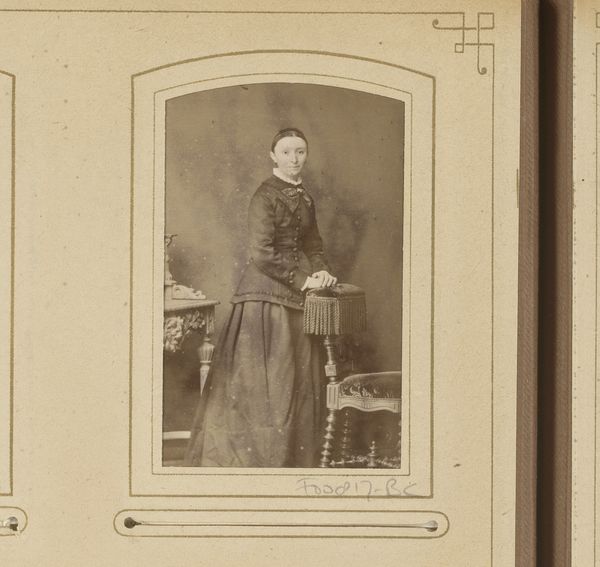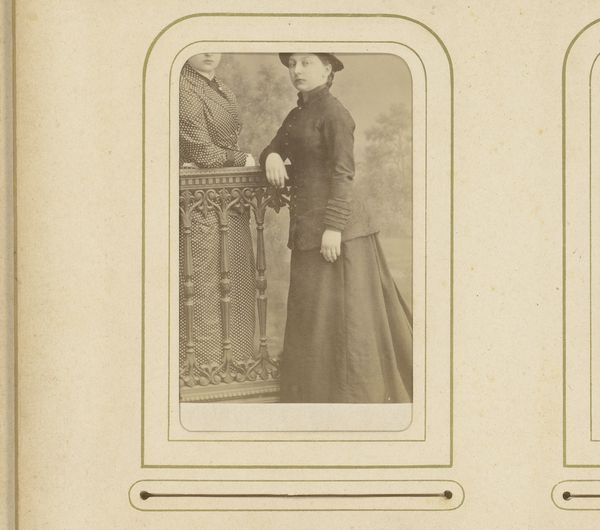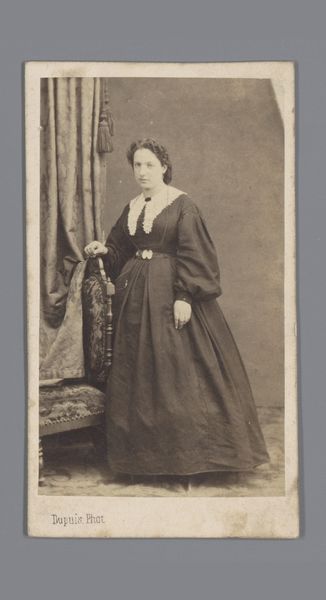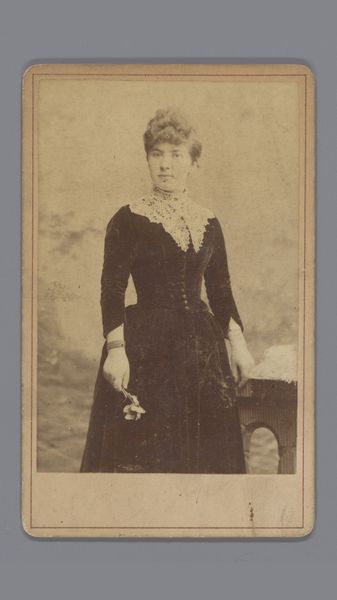
Portret van een staande vrouw in zwarte jurk met hoed en paraplu, aangeduid als Grietje Knol 1883 - 1910
0:00
0:00
photography, gelatin-silver-print
#
portrait
#
figuration
#
photography
#
gelatin-silver-print
Dimensions: height 82 mm, width 51 mm
Copyright: Rijks Museum: Open Domain
Curator: Welcome to the Rijksmuseum. Here we have a gelatin-silver print by Johannes Laurens Theodorus Huijsen, taken sometime between 1883 and 1910. It's titled "Portret van een staande vrouw in zwarte jurk met hoed en paraplu, aangeduid als Grietje Knol" which translates to "Portrait of a standing woman in a black dress with hat and umbrella, named Grietje Knol". Editor: My first impression is one of solemnity. She seems weighed down, not just by her dark clothing but also by some untold burden. The formality of the portrait adds to the sense of a life lived under constraint. Curator: Absolutely. This portrait captures a moment in the rapidly evolving role of women at the turn of the century. Photography, while becoming more accessible, was still a deliberate act, a statement. This woman, identified as Grietje Knol, likely commissioned or participated in this portrait to present herself in a very specific way. Editor: And that way is quite telling. The black dress, the hat, and even the tightly furled umbrella are symbols of a certain social status but also hint at the restrictive societal expectations placed on women. I'm curious about Grietje's own agency here, how much control she had over this representation. Was this her armour, or was she trapped by it? Curator: These photos also operated in the complex economies of relationships, marriage, and societal representation, often featured in family albums and displayed for guests. So how she's presented does reflect on the larger family standing and values. Editor: Considering the time frame, this image also brings up issues of class. While photography was becoming more democratized, access and self-representation would have varied widely across socio-economic backgrounds. How did that availability and form shape class consciousness in the Netherlands? Curator: That's an astute point. Looking at photography through this lens allows us to understand how notions of beauty, respectability, and social mobility were constructed and reinforced. The details, from her modest jewelry to the backdrop, tell a complex story about her place in society. Editor: It prompts me to think of the countless unseen or unrecorded stories. Who are the women whose images weren't captured, whose lives were relegated to the margins of history? The quietude and austerity invite reflections on exclusion. Curator: A powerful point that encourages us to seek and expand what stories are important when researching art today. Editor: Absolutely, I leave here feeling humbled but curious.
Comments
No comments
Be the first to comment and join the conversation on the ultimate creative platform.
